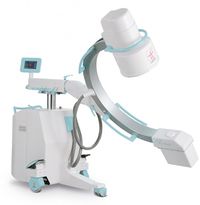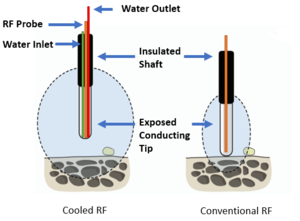Radiofrequency Neurotomy
Introduction
- Alternating current of high frequency radio waves
- Ion movement creates friction, dissipates energy as heat.
- Heating nerve tissue >45 degrees causes neural blockade
- Heating to 60-100 degrees induces protein coagulation and tissue death
- Conventional RF lesion done at 80-85 degrees for 60-90 seconds
- Placement confirmed normally by fluoroscopy +/- sensory and motor testing for RF
- Probe placement must be parallel to the target nerve
- Pain often recurs after ~400 days but can be repeated
Indications
- Generally for nociceptive pain: shut off nociceptive afferents from the painful structure (but not selective).
- Diagnosis should be confirmed with two positive diagnostic blocks. A single positive block can have a high false positive due to the placebo effect.
- RF is not indicated for central pain, spinal cord pathology, serious psychological factors, or when confident pain ratings are not possible.
- In New Zealand it is mostly used for the treatment of confirmed chronic facet joint pain.
Cooled vs Conventional Radiofrequency
Image modified from Patel 2016[1]
Cooled radiofrequency probes have a special tip allowing cold saline to run through it. It is cooled, but not cold. The saline decreases charring of structures immediately adjacent and allows the extension of the heated field. Energy transfer to a relatively large field (8-10mm), even distal to the probe tip. Energy transfer through a conventional probe is only 3-4mm, and does not extend distal to the probe. With a conventional probe, heating must be done adjacent to any nerve. This is not necessary with a cooled probe. Go to the articles in the see also section for the evidence behind its utility. It is superior to conventional radiofrequency for sacroiliac joint (due to the variable nerve course) and lumbar disc denervation (due to the larger field), but is equal when it comes to lumbar facet joint denervation when done with correct technique.
See Also
- Sacroiliac Joint Precision Treatment
- Lumbar Facet Joint Precision Treatment
- Lumbar Disc Precision Treatment
References
- ↑ Patel N. Twelve-Month Follow-Up of a Randomized Trial Assessing Cooled Radiofrequency Denervation as a Treatment for Sacroiliac Region Pain. Pain Pract. 2016;16(2):154-167. doi:10.1111/papr.12269



